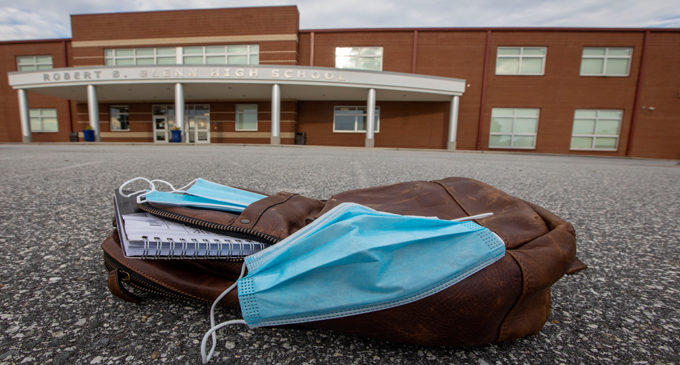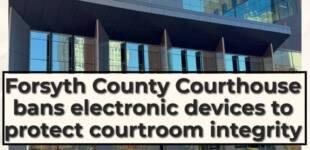Hairston discusses Plan C for school reopening in virtual town hall

In less than two weeks students will return to their virtual classrooms for the start of the 2020 school year. To help shed some light on what learning will look like here in Winston-Salem/Forsyth County, last week Superintendent Angela Hairston participated in a virtual town hall where she discussed ‘Plan C’ and answered questions from the community.
Last month Gov. Roy Cooper gave districts the power to choose whether to open schools under Plan B, which calls for schools to limit the maximum occupancy of all facilities to 50% and other restrictions, or Plan C, which continues remote or virtual learning. A few days later, the Winston-Salem/Forsyth County Schools Board of Education approved a recommendation made by Hairston to open schools under Plan C.
Hairston said when looking at the number of COVID-19 cases in Forsyth County, the number of teachers and other employees who don’t feel safe returning to the classroom, and the lack of resources, opening schools under Plan B at this time would be putting lives in danger.
“As a public school district, we’ve been tasked with trying to balance our number one priority – providing a safe, sound, quality education for all students – with the task of also protecting the safety, health, and wellness of the nearly 55,000 students and 8,000 employees and their respective families,” Hairston said.
Although students got a taste of remote learning at the end of last school year, during the town hall hosted by Action4Equity, a local grassroots organization that advocates for equity for all students, Hairston said when school starts on Aug. 17, things will be different.
In the spring remote learning was more “self-paced,” but moving forward students can expect more face-to-face learning, with a more structured schedule and an attendance policy. “Our teachers will actually log on and teach a regular schedule and students will have a schedule just as they would if they were in school,” Hairston said.
Students will receive their schedules at a virtual orientation before schools start. According to Hairston, students in elementary school will have less screen time than students in middle and high school. The first week of classes will be used for students to learn the ins and outs of virtual learning and the platform they will be using. Most instruction will be conducted using Microsoft Teams, but the district has approved the use of Zoom as well.
One of the biggest issues with virtual learning in the spring was getting students to participate. When schools were forced to go virtual, more than 7,000 students across the district didn’t participate regularly. To try to remedy the problem, the district has established groups of employees who will establish Cares teams at each school. According to Hairston, the role of the Cares teams will be to ensure students are engaged.
“Their sole purpose is to, upon referral from the school, be in the community working with parents and students on the best way to conduct virtual learning. We don’t want to lose any children,” she continued. “We know that sometimes there are a lot of stressors in the home and parents need help; we’re not confused about that. So Cares teams will be in the community … they will knock on doors … and as my grandmother would say, be our boots on the ground, people in the community helping children who have lost their way.”
Cares teams will also be tasked with setting up learning centers throughout the community. Learning centers will provide students with a safe space to use computers, ask questions and receive tutoring if needed.
The district will also offer training for parents to learn the various platforms ahead of the new school year. Sharon Frazier, WS/FCS program manager, said the district will start introductory training sessions for parents this week. She said the training sessions will be recorded and made available on the district’s website.
“We’re going to have to push things out quickly, but we will have some sessions that will begin next week,” Frazier continued. “And that’s just technology; there will be other sessions as well, including helping parents to set protocols for learning at home and helping students stay organized.”
After the first nine weeks of virtual learning, district leaders will consider opening schools under Plan B. Hairston said they will collaborate with local health professionals, community members, teachers and students to develop the plan that will be presented to the board of education in October.








